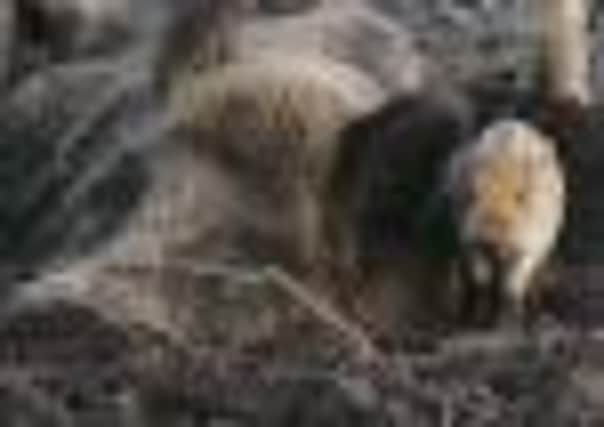Scotland’s boar hunting return deemed ‘inhumane’


The animals were hunted to extinction in Scotland in the 17th century. But now a burgeoning number of boar that escaped from breeding farms in the 1970s have formed new herds. Around 70 of the animals are now living on the remote Glendessary Estate on the Knoydart peninsula.
Estate managers are charging hunters up to £4,000 per week to stay in the estate lodge – which can take 14 guests – with boar hunting included as part of the package. One boar shot on the estate was a colossal 28 stone.
Advertisement
Hide AdAdvertisement
Hide AdSupporters say wild boar hunting – which is a lucrative industry in continental Europe – could be a financial moneyspinner for hard-pressed estates which rely on field sports to provide income and protect jobs.
Animal welfare organisations have condemned the business as inhumane as the animals are lured into hunters’ sights by regular feeding in areas close to their woodland hideouts and shot under bright lights.
Mike Flynn, the chief superintendent of the Scottish SPCA, said: “This activity cannot be described as hunting in the true sense as, based on the information provided to us, the animals are enticed with food.”
Glendessary is owned by Sir Patrick Grant, the 14th Baronet of Dalvey, who trained as a gamekeeper but went on to found a successful men’s luxury accessories company. As well as 16,000-acre Glendessary, at the head of Loch Nevis, he owns an estate at Farr, near Inverness.
According to Glendessary manager Fraser Mackay, wild boar were kept on the estate for their meat, but some animals escaped into the wild and established a herd. “At first we tried to cull them ourselves to get rid of them,” he said. “Now we have decided to manage them in a different way.”
The estate’s activities are being publicised this month in Scottish Field. A video on the estate’s website shows an animal emerging from woods into a specially-created feeding area, which has trip sensors that trigger lights at dusk. Hunters with rifles are seated up to 80 metres away to ensure their safety.
Mackay said: “We’ve shot a dozen boar this year and we’ll probably have shot around 25 by the end of April. At the moment we are letting weeks where we shoot (deer) hinds and boar but, in future, we’ll do full weeks on the boar.
“I don’t think estates should release them, but if they have boar then there is no reason they can’t be hunted,” he said. “It’s huge on the continent where there are populations that have never become extinct.”
Advertisement
Hide AdAdvertisement
Hide AdLibby Anderson, of animal rights organisation One Kind, said: “This is not sport in any sense. Luring the animals to a spot using food is not hunting, there is no skill. What is very difficult however is killing an animal the size of a boar with a single shot and not causing it to suffer.”